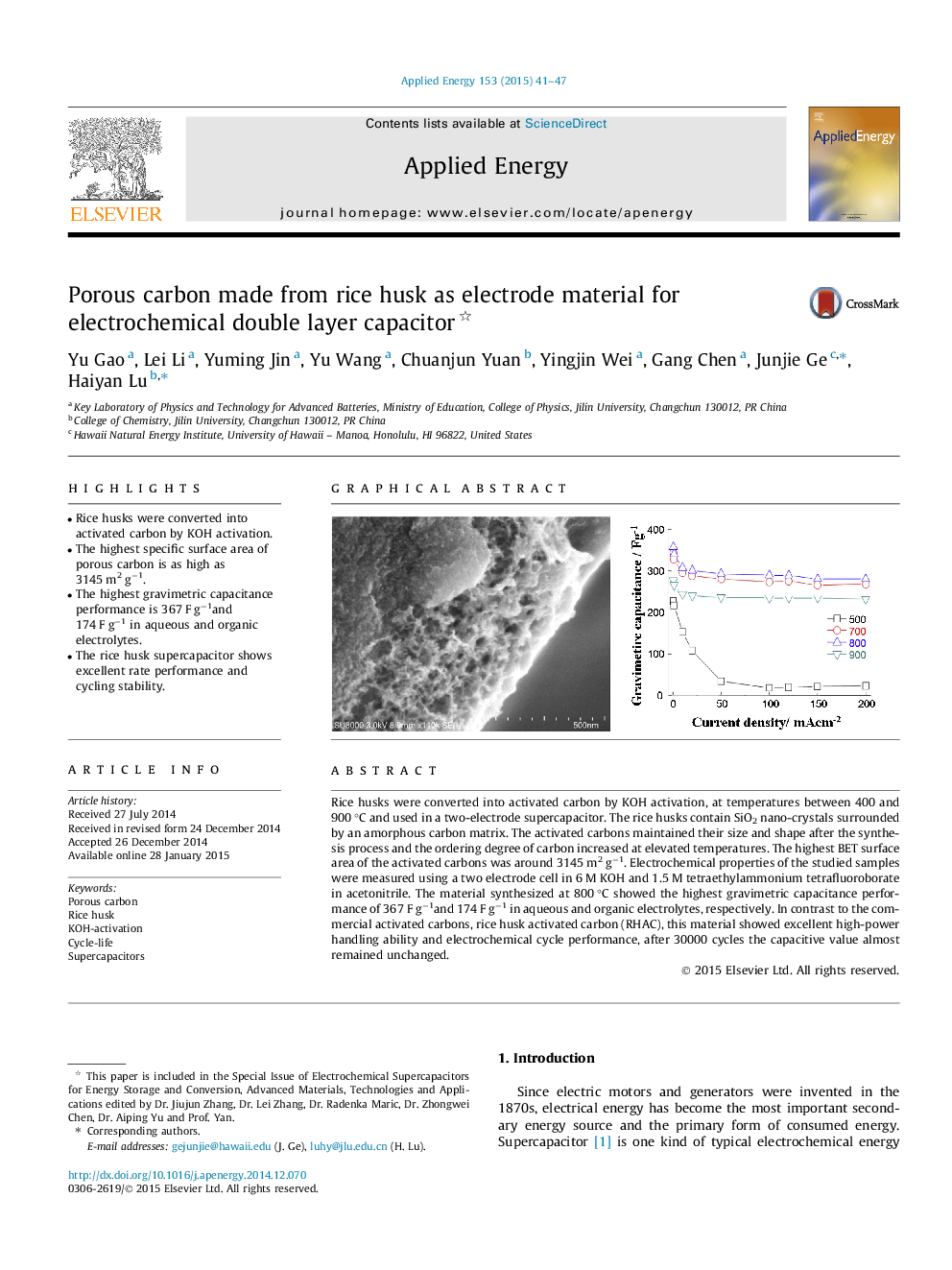| Article ID | Journal | Published Year | Pages | File Type |
|---|---|---|---|---|
| 242489 | Applied Energy | 2015 | 7 Pages |
•Rice husks were converted into activated carbon by KOH activation.•The highest specific surface area of porous carbon is as high as 3145 m2 g−1.•The highest gravimetric capacitance performance is 367 F g−1and 174 F g−1 in aqueous and organic electrolytes.•The rice husk supercapacitor shows excellent rate performance and cycling stability.
Rice husks were converted into activated carbon by KOH activation, at temperatures between 400 and 900 °C and used in a two-electrode supercapacitor. The rice husks contain SiO2 nano-crystals surrounded by an amorphous carbon matrix. The activated carbons maintained their size and shape after the synthesis process and the ordering degree of carbon increased at elevated temperatures. The highest BET surface area of the activated carbons was around 3145 m2 g−1. Electrochemical properties of the studied samples were measured using a two electrode cell in 6 M KOH and 1.5 M tetraethylammonium tetrafluoroborate in acetonitrile. The material synthesized at 800 °C showed the highest gravimetric capacitance performance of 367 F g−1and 174 F g−1 in aqueous and organic electrolytes, respectively. In contrast to the commercial activated carbons, rice husk activated carbon (RHAC), this material showed excellent high-power handling ability and electrochemical cycle performance, after 30000 cycles the capacitive value almost remained unchanged.
Graphical abstractFigure optionsDownload full-size imageDownload as PowerPoint slide
